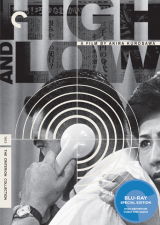 Our film club’s movie for November is High and Low (天国と地獄), Akira Kurosawa’s crime thriller from 1963.
Our film club’s movie for November is High and Low (天国と地獄), Akira Kurosawa’s crime thriller from 1963.
The film is loosely based on Ed McBain’s 1959 novel King’s Ransom and features Toshiro Mifune as a wealthy executive whose son is kidnapped for ransom. At the time of its release, the film was a huge commercial and critical success in Japan, and although many reviewers in the west expressed initial puzzlement over Kurosawa’s choice of tackling a “lesser genre” such as crime film, it has since become a favourite among many critics.
High and Low was remade in 1977 as Inkaar by the Indian director Raj N. Sippy, who changed the setting from Yokohama to Bombay. Many have also suggested that the 1996 movie Ransom starring Mel Gibson was inspired by Kurosawa’s movie. Martin Scorsese has also been considering a remake for about 20 years now. I think that the latest we have heard of it was in 2010 when Chris Rock was supposedly attached to write the screenplay.
Our previous discussions of the film can be found from under the High and Low topic.
High and Low is available on both DVD and Blu-ray. For more information, see the sections on Kurosawa DVDs and Kurosawa Blu-rays.
In December, we shall be watching Martin Scortsese’s Taxi Driver. For the full film club schedule, see the film club page.






I’m a bit behind on my viewing – I’ve been super busy since returning from my travels, I haven’t even managed to catch up yet with the last episode of Breaking Bad (no spoilers please…). But this is one of my favourite Kurosawa films – a film I’m convinced as a thriller is the equal of the very best of Hitchcock or Polanski (i.e. among the very best crime films ever made).
However, I’ve found most writings on it from the usual suspects quite disappointing, I think of all Kurosawa films it may be the one with most fertile ground for a fresh look. In particular, I think it is a much deeper and more subtle examination of the themes previously (and more famously) examined in Rashomon, especially the notion of objective vs subjective realities of ‘truth’. I think the manner in which the film maintains a fairly conventional linear narrative while flipping our assumptions about the main protagonists along with the constant motif of mirrored reflections is intended to make the audience question themselves in a way the characters (in particular the kidnapper) seem incapable of doing. What this really means though is something I haven’t quite worked out yet….